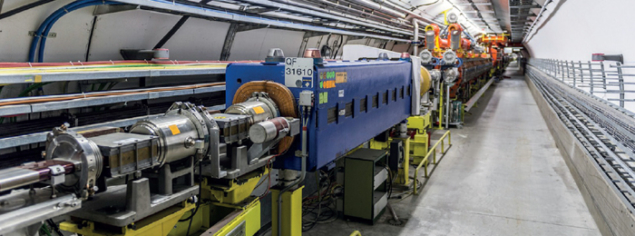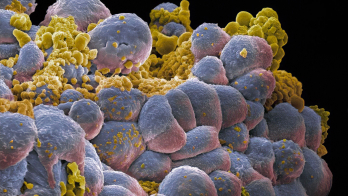
Image credit: CERN-GE-1311288 – 03.
Work continues apace to ready the Super Proton Synchrotron (SPS) for its planned October restart, while beams are already being delivered to experiments at the Proton Synchrotron (PS) and PS Booster.
During July and August, SPS teams were kept busy with a range of start-up tests for the various equipment groups, including eight weeks of electrical power-converter tests. Since it began in February 2013, the Long Shutdown 1 (LS1) has seen the replacement and renovation of about 75% of the SPS powering, including major components such as 18 kV transformers, switches, cables and thyristor bridges that sit at the heart of the power converters. There have also been important upgrades to the control and high-precision measurement systems. The summer tests were to confirm that the renovated converters were operating correctly to power the SPS dipole and quadrupole magnets.
Slotted among this busy schedule of powering tests were the final checks of the accelerator’s magnets and beam dump. The SPS had one of each of the three main types of magnet fault: an electrical fault (short circuit) in a magnet circuit, a water leak (in the cooling system), and a vacuum-chamber leak. In addition, the main beam dump had to be replaced. Rather than stopping the tests for each move, the teams replaced all four elements in one go.
On 10–12 August, the three magnets and beam dump were removed and replaced with spares in the SPS tunnel. The logistics for this move were complex because of the weight of the magnets and beam dump, and also the 10-tonne chariot and lifting equipment. In addition, these large pieces of equipment fill the entire width of the tunnel, so co-ordinating which vehicles and teams were where and synchronizing their movements was vital.
Although the SPS teams are well-versed at replacing magnets – they can replace as many as four magnets during a two-day technical stop – replacing the beam dump proved to be a tougher challenge. Because the dump is radioactive, the length of transport had to be kept as short as possible and moving the dump from the tunnel to the radiation storage area could not take place if it rained. With this in mind, the operations team created detailed plans for the move, providing hourly updates and back-up solutions in case of rain.
Despite these extensive tests and replacements, the SPS remains on schedule to take beam from the PS in early September, with the accelerator operating again in October to provide beams to the North Area.
At the LHC, in late August the cooling of sector 1-2 was in progress, and the cooling of sector 5-6 beginning. Vacuum teams were checking for any final leaks and carrying out sealing tests in various sectors. At the same time, the copper-stabilizer continuity measurement tests were in progress in sector 8-1, before being carried out throughout the machine. The first power tests have begun in sector 6-7, which will be the first sector ready for beam. Elsewhere, electrical validation tests were in progress throughout the machine, together with instrumentation tests, particularly on the beam-loss sensors. All of the collimators, the kicker magnets and the beam instrumentation in the straight sections of the LHC were installed and under vacuum.








